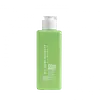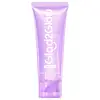What's inside
What's inside
 Key Ingredients
Key Ingredients

 Benefits
Benefits

 Concerns
Concerns

 Ingredients Side-by-side
Ingredients Side-by-side

Water
Skin ConditioningCocamidopropyl Betaine
CleansingSodium Cocoamphoacetate
CleansingGlycerin
HumectantParfum
MaskingPPG-20 Methyl Glucose Ether
Skin ConditioningAcrylates Copolymer
Disodium Cocoyl Glutamate
CleansingSodium Cocoyl Glutamate
CleansingSodium Chloride
MaskingSodium Cocoyl Glycinate
CleansingDisodium Lauroyl Glutamate
CleansingLauramidopropyl Hydroxysultaine
CleansingPhenoxyethanol
PreservativeNiacinamide
SmoothingHydrolyzed Jojoba Esters
Skin ConditioningPolyquaternium-7
Coconut Acid
CleansingSodium Cocoate
CleansingOryza Sativa Extract
AbsorbentEthylhexylglycerin
Skin ConditioningCamellia Sinensis Extract
AntioxidantButylene Glycol
HumectantTrisodium Ethylenediamine Disuccinate
PEG-7 Glyceryl Cocoate
Emulsifying3-O-Ethyl Ascorbic Acid
Skin Conditioning1,2-Hexanediol
Skin ConditioningCeramide NP
Skin ConditioningSaccharomyces Polypeptides
Skin ConditioningGlycine Max Polypeptide
Skin ConditioningAcetyl Tetrapeptide-5
HumectantPalmitoyl Pentapeptide-4
Skin ConditioningPalmitoyl Tripeptide-1
Skin ConditioningPalmitoyl Tripeptide-5
Skin ConditioningWater, Cocamidopropyl Betaine, Sodium Cocoamphoacetate, Glycerin, Parfum, PPG-20 Methyl Glucose Ether, Acrylates Copolymer, Disodium Cocoyl Glutamate, Sodium Cocoyl Glutamate, Sodium Chloride, Sodium Cocoyl Glycinate, Disodium Lauroyl Glutamate, Lauramidopropyl Hydroxysultaine, Phenoxyethanol, Niacinamide, Hydrolyzed Jojoba Esters, Polyquaternium-7, Coconut Acid, Sodium Cocoate, Oryza Sativa Extract, Ethylhexylglycerin, Camellia Sinensis Extract, Butylene Glycol, Trisodium Ethylenediamine Disuccinate, PEG-7 Glyceryl Cocoate, 3-O-Ethyl Ascorbic Acid, 1,2-Hexanediol, Ceramide NP, Saccharomyces Polypeptides, Glycine Max Polypeptide, Acetyl Tetrapeptide-5, Palmitoyl Pentapeptide-4, Palmitoyl Tripeptide-1, Palmitoyl Tripeptide-5
Water
Skin ConditioningPotassium Cocoyl Glycinate
Acrylates/Steareth-20 Methacrylate Crosspolymer
Sodium Lauroamphoacetate
CleansingVaccinium Angustifolium Fruit Extract
Skin ProtectingPotassium Cocoate
EmulsifyingCeramide EOP
Skin ConditioningCeramide Ng
Skin ConditioningCeramide NP
Skin ConditioningCeramide As
Skin ConditioningCeramide AP
Skin ConditioningSodium Chloride
MaskingGlycosyl Trehalose
Emulsion StabilisingPotassium Hydroxide
BufferingCitric Acid
BufferingHydrogenated Starch Hydrolysate
HumectantLauryl Hydroxysultaine
CleansingCaprylyl Glycol
EmollientDisodium EDTA
Aroma
Phenoxyethanol
PreservativeWater, Potassium Cocoyl Glycinate, Acrylates/Steareth-20 Methacrylate Crosspolymer, Sodium Lauroamphoacetate, Vaccinium Angustifolium Fruit Extract, Potassium Cocoate, Ceramide EOP, Ceramide Ng, Ceramide NP, Ceramide As, Ceramide AP, Sodium Chloride, Glycosyl Trehalose, Potassium Hydroxide, Citric Acid, Hydrogenated Starch Hydrolysate, Lauryl Hydroxysultaine, Caprylyl Glycol, Disodium EDTA, Aroma, Phenoxyethanol
 Reviews
Reviews

Ingredients Explained
These ingredients are found in both products.
Ingredients higher up in an ingredient list are typically present in a larger amount.
Ceramide NP is a type of ceramide.
Ceramides are intercellular lipids naturally found in our skin that bonds dead skin cells together to create a barrier. They are known for their ability to hold water and thus are a great ingredient for dry skin.
Ceramides are an important building block for our skin barrier. A stronger barrier helps the skin look more firm and hydrated. By bolstering the skin ceramides act as a barrier against irritating ingredients. This can help with inflammation as well.
If you would like to eat ceramides, sweet potatoes contain a small amount.
Read more about other common types of ceramides here:
Ceramide AP
Ceramide EOP
Phenoxyethanol is a preservative that has germicide, antimicrobial, and aromatic properties. Studies show that phenoxyethanol can prevent microbial growth. By itself, it has a scent that is similar to that of a rose.
It's often used in formulations along with Caprylyl Glycol to preserve the shelf life of products.
Chances are, you eat sodium chloride every day. Sodium Chloride is also known as table salt.
This ingredient has many purposes in skincare: thickener, emulsifier, and exfoliator.
You'll most likely find this ingredient in cleansers where it is used to create a gel-like texture. As an emulsifier, it also prevents ingredients from separating.
There is much debate on whether this ingredient is comedogenic. The short answer - comedogenic ratings don't tell the whole story. Learn more about comegodenic ratings here.
The concensus about this ingredient causing acne seems to be divided. Research is needed to understand if this ingredient does cause acne.
Scrubs may use salt as the primary exfoliating ingredient.
Learn more about Sodium ChlorideWater. It's the most common cosmetic ingredient of all. You'll usually see it at the top of ingredient lists, meaning that it makes up the largest part of the product.
So why is it so popular? Water most often acts as a solvent - this means that it helps dissolve other ingredients into the formulation.
You'll also recognize water as that liquid we all need to stay alive. If you see this, drink a glass of water. Stay hydrated!
Learn more about Water